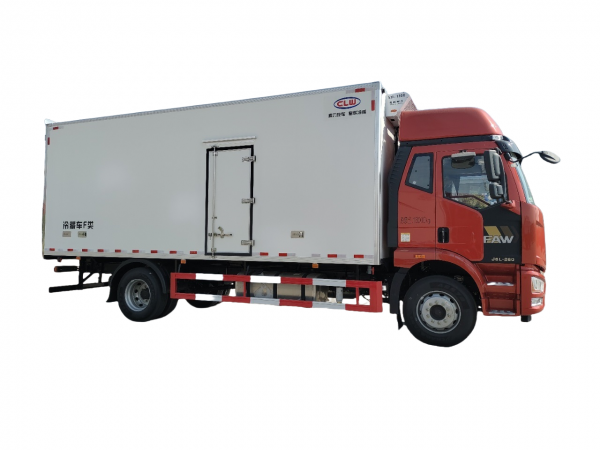Introduction
Truck-mounted cranes are a crucial piece of equipment in various industries such as construction, transportation, and logistics. These versatile machines provide the ability to lift and move heavy loads with precision and efficiency. However, operating a truck-mounted crane comes with inherent risks that can lead to accidents and injuries if not properly managed. In this comprehensive guide, we will delve into the importance of truck-mounted crane safety, key regulations and standards, best practices for safe operation, and maintenance tips to ensure the well-being of operators and bystanders.

Importance of Truck-Mounted Crane Safety
The safe operation of truck-mounted cranes is paramount to prevent accidents, injuries, and fatalities in the workplace. According to the Occupational Safety and Health Administration (OSHA), crane-related incidents are a leading cause of workplace fatalities in the construction industry. Ensuring the safety of operators, workers, and bystanders should be a top priority for organizations that utilize truck-mounted cranes.
Key Regulations and Standards
Several regulations and standards govern the safe operation of truck-mounted cranes to protect workers and maintain workplace safety. The following are some of the key regulations and standards that operators and organizations should be aware of:
1. OSHA Regulations: The Occupational Safety and Health Administration (OSHA) sets forth regulations related to crane safety under 29 CFR 1926 Subpart CC. These regulations cover various aspects of crane operation, including operator certification, inspection requirements, and safe work practices.
2. ASME Standards: The American Society of Mechanical Engineers (ASME) has developed standards such as ASME B30.5 for mobile and locomotive cranes. These standards provide guidelines for the design, inspection, testing, and safe operation of cranes, including truck-mounted cranes.
3. ANSI Standards: The American National Standards Institute (ANSI) publishes standards related to crane safety, including ANSI/ASSE A10.31 for mobile cranes. These standards outline best practices for crane operation, maintenance, and safety management.
Best Practices for Safe Operation
To ensure the safe operation of truck-mounted cranes, operators should follow best practices and safety guidelines. The following are some key best practices for safe crane operation:
1. Operator Training: Operators should receive comprehensive training on the safe operation of truck-mounted cranes, including proper load handling, rigging techniques, and signaling procedures. Training should cover both theoretical knowledge and practical skills to ensure competency.
2. Pre-Operational Inspection: Before using a truck-mounted crane, operators should perform a thorough pre-operational inspection to check for any visible defects, malfunctions, or safety hazards. Inspections should cover critical components such as the boom, hoist, controls, and safety devices.
3. Load Capacity Limits: Operators should be aware of the load capacity limits of the crane and never exceed the rated capacity. Overloading a crane can lead to structural failure, tip-overs, and accidents. Operators should consult load charts and manufacturer guidelines to determine safe load capacities.
4. Proper Rigging: Proper rigging is essential for safe load handling with a truck-mounted crane. work truck should use appropriate slings, chains, and attachments to secure the load and prevent shifting during lifting operations. Rigging should be inspected for wear and damage before each use.
5. Clear Communication: Clear communication between the crane operator, signal person, and other workers is essential for safe crane operation. Standard hand signals or radio communication should be used to coordinate lifting operations and ensure everyone is aware of their roles and responsibilities.
6. Avoiding Hazards: Operators should be vigilant for potential hazards such as power lines, uneven ground, overhead obstructions, and inclement weather conditions. Crane operations should be planned carefully to minimize risks and ensure a safe working environment.
Maintenance Tips
Regular maintenance is crucial to ensure the safe and efficient operation of truck-mounted cranes. The following are some maintenance tips to keep cranes in optimal condition:
1. Routine Inspections: Conduct routine inspections of the crane, including mechanical components, hydraulic systems, electrical systems, and safety devices. Inspections should be performed by qualified technicians and documented for compliance purposes.
2. Lubrication: Proper lubrication of moving parts is essential to prevent wear and ensure smooth operation of the crane. Follow the manufacturer's recommendations for lubrication intervals and use approved lubricants for each component.
3. Component Replacement: Replace worn or damaged components such as cables, hoses, sheaves, and hooks to prevent accidents and equipment failure. Components should be inspected regularly and replaced as needed to maintain the crane's safety and reliability.
4. Operator Feedback: Encourage operators to report any issues or abnormalities with the crane during operation. Operator feedback can help identify potential problems early and prevent more significant issues down the line.
Conclusion
Truck-mounted cranes are valuable tools in various industries, but their safe operation is essential to prevent accidents and injuries. By following key regulations and standards, implementing best practices for safe operation, and maintaining cranes regularly, organizations can ensure the safety and well-being of operators and bystanders. Prioritizing crane safety not only protects lives but also contributes to improved efficiency and productivity in the workplace. By adhering to safety guidelines and investing in proper training and maintenance, organizations can create a culture of safety that benefits everyone involved in crane operations.
